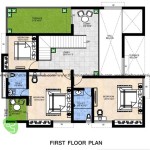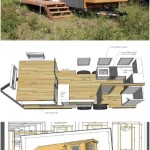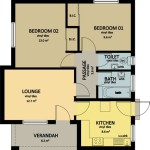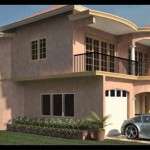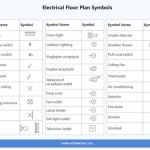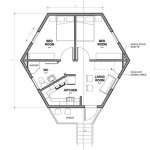House Designs and Floor Plans
Choosing the right house design and floor plan is a crucial step in building or buying a home. A well-designed house maximizes space, optimizes functionality, and reflects the homeowner's lifestyle. This article explores the critical elements of house designs and floor plans to provide a comprehensive understanding for prospective homeowners and builders.
Key Considerations for House Designs
Several factors contribute to an effective house design. Understanding these elements is essential for making informed decisions throughout the design process.
- Architectural Style: The architectural style influences the overall aesthetic of the house, from the exterior facade to the interior details. Common styles include Ranch, Colonial, Victorian, Craftsman, and Modern.
- Lot Size and Orientation: The size and orientation of the lot significantly impact the house design. Maximizing natural light and views while adhering to building codes are important considerations.
- Budget: The budget dictates the size, materials, and complexity of the house design. Establishing a realistic budget early in the process helps avoid cost overruns.
- Lifestyle: The design should cater to the specific needs and lifestyle of the homeowner. Consider factors such as family size, entertaining needs, and accessibility requirements.
- Local Climate: The local climate influences design elements like insulation, window placement, and roofing materials. Energy efficiency should be prioritized in the design process.
Understanding Floor Plans
A floor plan is a scaled diagram that shows the layout of a house. It provides a visual representation of the arrangement of rooms, walls, doors, and windows. A well-designed floor plan contributes significantly to the functionality and flow of the house.
Essential Elements of a Floor Plan
The following elements are typically included in a floor plan:
- Room Dimensions: Accurate measurements of each room are essential for space planning and furniture placement.
- Wall Placement: Clearly defined walls indicate the boundaries of each room and the overall layout of the house.
- Door and Window Placement: The placement of doors and windows affects natural light, ventilation, and traffic flow.
- Stairways and Hallways: The location and design of stairways and hallways contribute significantly to the circulation within the house.
- Plumbing Fixtures: The location of sinks, toilets, and showers is crucial for plumbing design and functionality.
- Electrical Outlets and Fixtures: The placement of electrical outlets and light fixtures is essential for electrical planning.
Types of House Designs and Floor Plans
Numerous house designs and floor plans cater to diverse needs and preferences. Understanding the various types can assist in selecting the most appropriate design for your requirements.
- Single-Story Homes: Offer easy accessibility and are ideal for families with young children or elderly individuals.
- Two-Story Homes: Maximize living space on smaller lots and often provide distinct separation between living areas and bedrooms.
- Split-Level Homes: Feature staggered floor levels, creating distinct living zones and maximizing vertical space.
- Open Floor Plans: Combine living, dining, and kitchen areas into a single, spacious area, promoting interaction and a sense of openness.
- Closed Floor Plans: Feature separate rooms with defined walls, offering privacy and a more traditional layout.
Working with Architects and Designers
Collaborating with experienced architects and designers is crucial for developing a successful house design and floor plan. Their expertise ensures that the design meets both aesthetic and functional requirements.
- Initial Consultation: Discuss your needs, preferences, and budget with the architect or designer.
- Conceptual Design: Review initial sketches and floor plans to ensure they align with your vision.
- Design Development: Refine the design, incorporating details and specifications.
- Construction Drawings: Finalize the plans for construction, including detailed dimensions and specifications.
Importance of Functionality and Flow
A well-designed floor plan prioritizes functionality and flow. Careful consideration of traffic patterns, room placement, and access points ensures a comfortable and efficient living environment.
- Traffic Flow: Minimize congestion and ensure easy movement between rooms.
- Room Placement: Consider the relationship between rooms and their intended use.
- Accessibility: Ensure adequate access for individuals with disabilities.
Maximizing Natural Light and Ventilation
Incorporating natural light and ventilation enhances the comfort and energy efficiency of a home. Strategic window placement and open floor plans can maximize these elements.
- Window Placement: Orient windows to capture sunlight and breezes.
- Open Floor Plans: Promote air circulation and natural light penetration.
- Cross-Ventilation: Design for natural airflow through the house.
Future-Proofing Your Home Design
Consider future needs when designing your home. Adaptable spaces and flexible layouts can accommodate changing lifestyles and family dynamics over time.
- Flexible Spaces: Design rooms that can serve multiple purposes.
- Adaptable Layouts: Consider future expansion or modification possibilities.
- Universal Design Principles: Incorporate features that cater to aging in place.

Small House Design 2024005 Pinoy Eplans Modern Plans Bungalow

Floor Plans Types Symbols Examples

Decors Designs Floor House Plans Small 18 With Modern Pictures

Small House Design Shd 2024007 Pinoy Eplans One Y Bungalow Plans Floor

Top 5 Modern House Plans With Photos Floor Archid

Floor Plans Types Symbols Examples

Modern House Design Floor Plans And Designs

22 House Design With Floor Plans You Will Love Simple Two Story Architectural Beautiful

Misty Falls House Plan By Archival Designs

House Plans How To Design Your Home Plan

